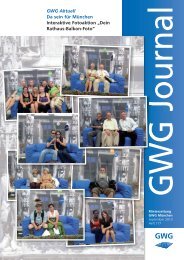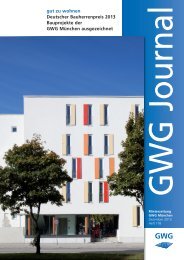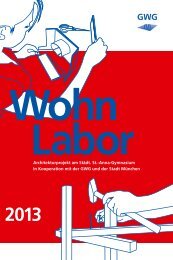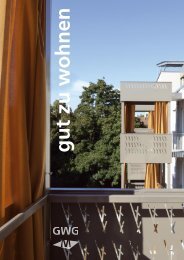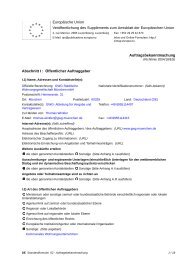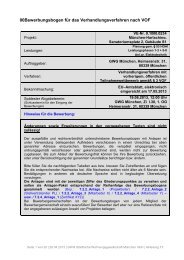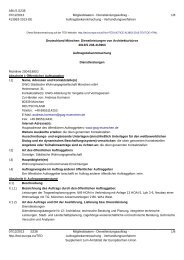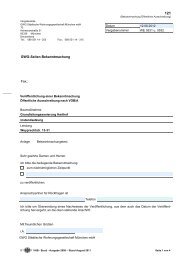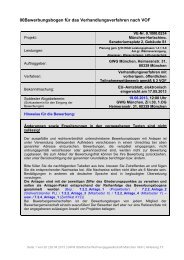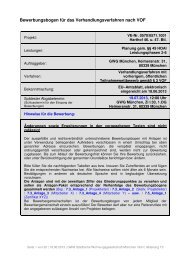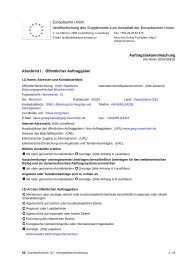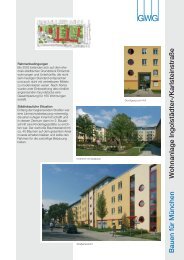New build - GWG München
New build - GWG München
New build - GWG München
You also want an ePaper? Increase the reach of your titles
YUMPU automatically turns print PDFs into web optimized ePapers that Google loves.
After the Second World War, the gaps in<br />
the city’s fabric gradually began to be<br />
filled up again. In the middle of it all<br />
was <strong>GWG</strong> <strong>München</strong> with its enormous<br />
<strong>build</strong>ing programme and massive responsibility<br />
to provide housing for people<br />
in the lower social strata. By 1951,<br />
the proportion of new residential <strong>build</strong>ings<br />
earmarked for social housing was<br />
85%, although this figure would fall to<br />
45% in the ensuing two years. The<br />
estates that arose in this period featured<br />
extremely sparse amenities. But they did<br />
feature one luxury, located between the<br />
<strong>build</strong>ings: the generously proportioned<br />
garden areas, that these days are a<br />
rareity. Between 1952 and 1964, a large<br />
estate arose along the Krüner Strasse,<br />
over an area formerly used largely as<br />
farmland, comprising 226 <strong>build</strong>ings with<br />
1,742 rental and 90 owner-occupied<br />
apartments. However, their “simple<br />
construction” was to result in enormous<br />
problems in the long term in terms of<br />
maintenance and modernisation,”<br />
wrote Uli Walter more than twenty years<br />
ago in his History of the <strong>GWG</strong> (Sozialer<br />
Wohnungsbau in <strong>München</strong>, 1993, p.<br />
109).<br />
60<br />
But there were few alternatives. By<br />
1957, Munich’s population had crossed<br />
the 1,000,000 mark, and pressure grew<br />
to turn unbuilt areas into industrial<br />
zones, and to create housing on farmland<br />
for all those people who had<br />
moved south. Munich continued to<br />
Aerial photograph of the <strong>GWG</strong> estate in 1961 (top),<br />
View of the site when it was still farmland, 1912<br />
(bottom)<br />
prosper, and by the the 1972 Olympic<br />
Games, it had developed into the highly<br />
praised "World City with a Heart". The<br />
period which saw ring-road bypasses be<br />
built around the inner city to calm the<br />
city-centre traffic has now largely been<br />
forgotten. This was also the time in



